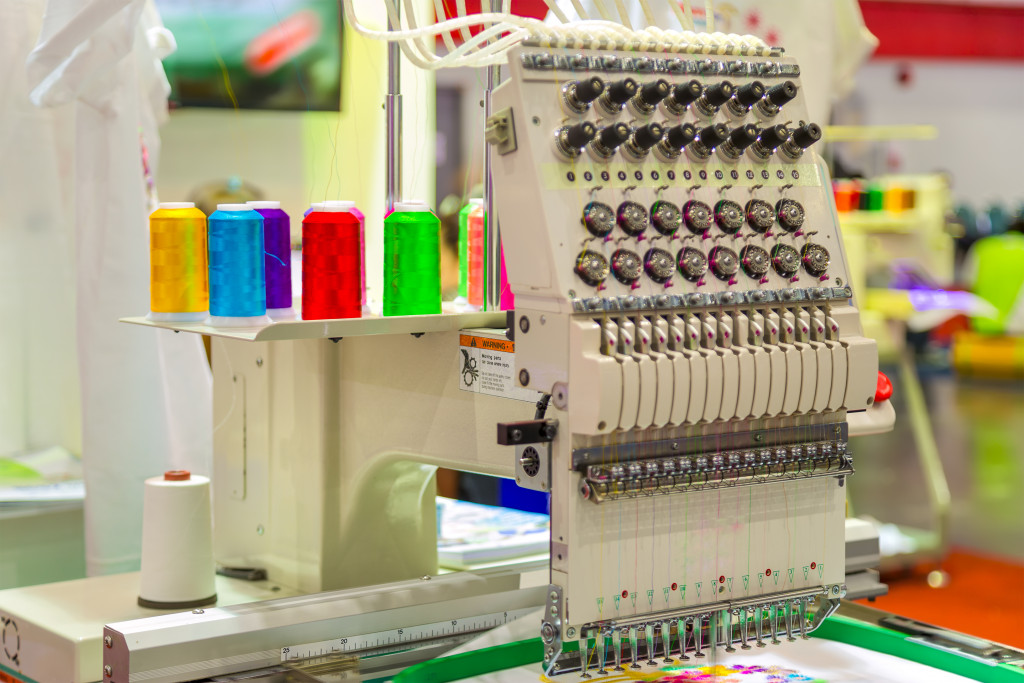You might want to start your own embroidery company for many reasons. Maybe you like being your boss, or you think you could do it better than anyone else. Maybe you just like embroidery and want to share your skills. No matter your reason, starting your own embroidery company is a great way to make your dreams a reality!
People don’t start their own embroidery companies because they are afraid of the unknown. They don’t know what challenges they will face, and they don’t know how to get started. This article will help you overcome those common challenges to start your own business with confidence. Here’s a step-by-step guide to how you can begin your first embroidery shop.
Research
When starting any business, it’s essential to do your research first. You need to know what the industry looks like, what the competition is like, and what the potential customers want. The embroidery industry is no different. You need to research all of the following:
- The different types of embroidery and the current trends.
- The different types of fabrics and materials can be embroidered.
- How much does embroidery cost, and what are the average prices?
- What kind of designs are people looking for?
- What competitors are in the industry, and what they’re offering?
- How much money can you expect to make in the industry?
We’ve looked a bit into the industry to shorten your research and have seen some positive things. First off, the industry is worth a staggering $877 million in the United States. The market has positive growth and is expected to grow even more significantly in the coming years. That’s good news for entrepreneurs like you!
Choose a business model
Now that you know a bit about the industry, it’s time to start thinking about your business model. There are three standard models in the embroidery industry.
Home-based
Home-based businesses are the most common type of embroidery business. This is because they have lower startup costs and can be run with very little overhead. However, the downside is that home-based businesses often have trouble getting noticed by potential customers.
Online
Online businesses are becoming more popular in the embroidery industry. This is because they have a global reach and can sell to anyone globally. The downside of online businesses is that they often have lower profit margins than other businesses.
Brick-and-mortar
Brick-and-mortar businesses are the traditional type of embroidery business. They have higher startup costs but can often bring in more customers. The downside of brick-and-mortar businesses is often limited to a certain geographic area.
Set up your business structure
Once you’ve decided on your business model, it’s time to start setting up your business structure. This includes things like choosing a business name, registering your business, and getting a tax ID number. You’ll also need to decide whether you want to be a sole proprietor, partnership, or corporation. Each of these has its own advantages and disadvantages.
Sole proprietor
If you’re starting your business by yourself, you’ll need to choose a business name and register it with your state. You’ll also need to get a tax ID number from the IRS. The advantage of being a sole proprietor is that it’s very simple to set up. The downside is that you’re personally liable for all debts and losses incurred by the business.
Partnership
If you’re starting your business with one or more partners, you’ll need to choose a business name and register it with your state. You’ll also need to get a tax ID number from the IRS. Each partner will be personally liable for all debts and losses incurred by the business. The advantage of partnerships is that they can raise capital more easily than sole proprietorships. The downside is that partners often have disagreements about the direction of the business.
Corporation
If you’re starting your business as a corporation, you’ll need to choose a business name and register it with your state. You’ll also need to get a tax ID number from the IRS.
Corporations are separate legal entities from their owners. This means that the owners are not personally liable for debts and losses incurred by the business. The advantage of corporations is that they can raise capital more easily than sole proprietorships and partnerships. The downside is that they are subject to double taxation (corporate income tax and shareholder dividends tax).

Purchase equipment and supplies
Once you’ve got your business structure in place, it’s time to start purchasing equipment and supplies. The type of equipment you’ll need will depend on the type of business you’re running. Home-based businesses will need less equipment than brick-and-mortar businesses. Online businesses will need a computer and an internet connection.
If you want to get ahead of the competition, then you’re going to need better equipment because this will lead to faster production. One of the best equipment right now is a laser fabric cutting machine. This machine can cut through multiple layers of fabric quickly and easily. With this machine, you’ll produce higher-quality products in less time.
Marketing your business
Once you’ve got your business up and running, it’s time to start marketing it. There are many different ways to market your business. You can use traditional methods like print ads and TV commercials. You can also use online methods like social media marketing and search engine optimization. The important thing is to find a method that works for you and your budget.
Congratulations! You’ve now started your very own embroidery business. These steps should have given you a good foundation on which to build your business. Once you do, it’s all about growing it. But that’s an article for another time. For now, concentrate on starting your business!

